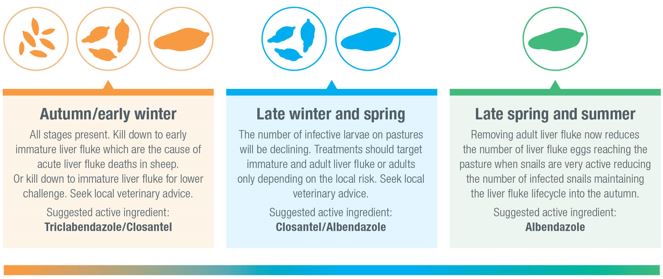A recent survey showed that 56% of Irish and UK sheep farmers have reported problems with liver fluke, but the report also suggested that farmers have a limited understanding of the best methods to control this parasite.
According to Dr Fiona Lovatt, who spoke recently about these results, the limited understanding of the liver fluke life cycle results in poor treatment choices and a higher impact on farm.
The Flock Health Ltd consultant added that many sheep farmers have a good understanding of the peak liver fluke challenge but there is major confusion regarding the best method of treatment.
Dr Lovatt said that it is essential to use a flock health plan involving testing and strategic dosing to ensure the effective control of liver fluke.
Sustainable liver fluke management can be achieved by concentrating on four key elements which are pasture protection, pasture management, grazing management and strategic treatments, she said.
This involves preventing liver fluke from reaching pasture when the mud snail is active, she said. Treating animals in early spring/summer reduces the adult fluke burden in turn reducing the number of fluke eggs reaching pasture. Removing the eggs from pasture during this period when mud snails are at their most active will reduce the numbers of infected snails which will be beneficial to flock health over the autumn and winter. Improving pasture management practices will reduce the prevalence of liver fluke in sheep, as the contact between the host an affected animal is reduced, she said.
The main elements to consider are:
Good grazing management practices will also reduce liver fluke infections in sheep, said Dr Lovatt.
Reducing the sheep’s contact with high-risk areas such as wet and boggy ground will greatly reduce the risk of liver fluke infection, she said. This should be practiced from late autumn to early spring as this is the high-risk period of infection, said the sheep consultant. According to Dr Lovatt, the mainstay treatment of liver fluke in autumn and winter is no longer adequate as liver fluke has become more common in other seasons of the year.
As a result, she said, farmers must consider using more strategic liver fluke control plans and they must also use the appropriate product for each individual stage of liver fluke development.
During the autumn and winter periods all stages of fluke are present. The ideal treatment during this period is to kill the early maturing fluke which are the primary cause of acute fluke deaths.
Adult and immature liver fluke should be targeted during the late winter and spring as the number of infectious larvae on pasture during this period will be minimal. This treatment will have a negative impact on the number of fluke later in the year, she said.
Dr Lovatt added the most effective treatment during late spring and summer is by using products which kill mature fluke as strategic dosing at this time will reduce the number of infected snails during the autumn and winter.

